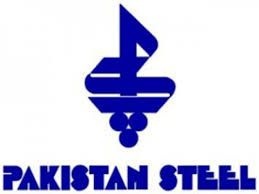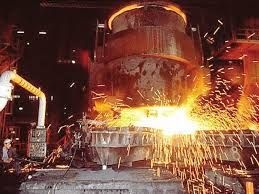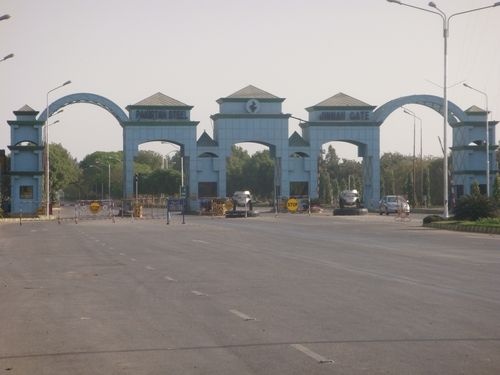History ; After the state establishment of State of Pakistan in 1947, the Government of Prime minister Lyakat Ali Khan, came to realized to a thinking mind-set that the goal of progressive industrialization nearly impossible without the possession of a self-reliant iron and steel foundry. Initially, the foreign dependence on imports caused serious economical setbacks to the state along with an extortionately high import bill which would be impossible to support. The initial idea and studies were conceived by the Council of Scientific and Industrial Research (PCSIR) and put forward the concept to the Five-Year Plans of Pakistan (1955-1960). In 1958, Soviet premier Nikolai Bulganin offered technical and scientific assistance to Prime minister Suhrawardy regarding the steel mills and expressing interests in establishing the country's first steel mills.

The project was comprehensively debated in the governments of Prime Minister Huseyn Suhravardie and President Ayub Khan; the manufacturing process, supply sources of the requisite machinery and raw materials, plant site, domestic ore versus imported ore, ownership pattern, product mix and all foreign financing credit kept the project on hold for a considerable time.

After 20 years of policy development and studies of PCSIR, President General Yahya Khan gave the approval of the recommendations of the state-owned scientific think tank, the Council of Scientific and Industrial Research. Bureaucrats and scientists agreed upon an unified decision that the "Karachi Steel Project" shall be sponsored in the state-public sector, under which a separate corporation sanctioned by the Companies Act, will be formed.
In pursuance of this decision, the Pakistan Steel Mills Corporation Limited (PSM Ltd.) was given commissioned and incorporated as a private limited company in a public sector in the accordance of Companies Act of 1913, to be established in Karachi, Sindh Province of Pakistan. Contacts were made to United States but the U.S. government showed lack of ambitions and interest in the project; therefore the studies were sent to Soviet Union who took the initiatives. The United States forcefully refused to provide or give any kind of assistance, as the creation of any such kind of basic industry in an underdeveloped country was considered a threat to their own exploitative imperialist agendas.
Finally, an agreement was reached with the V/O Tyaz Promexport of the Union of Soviet Socialist Republics (USSR) in January 1969. In 1971, Pakistan and Soviet Union finally proceeded to enter in a government agreement, upon which, the Soviet Union agreed to provide techno-financial assistance for the construction of a coastal based integrated steel mill at Karachi.
Labour development
Pakistan Steel Mills listing with the nation capable to produce steel (10-50Mn tonnes of steel) and iron foundries locally.
In 1956, the Krupp industries of West Germany offered to set up a steel mill based on Kalabagh iron ore, coal and most other minerals available within about 11 miles (18 km). The project was dismissed by ministry of energy led by its minister Zulfikar Ali Bhutto who accepted the Soviet studies instead as Bhutto favoured the idea to establish one single enormous steel mill based 100% imported steel and iron ore instead of local ore at Kalabagh District. In June 1966, another West-German steel firm, the Salzgitter AG produced ~5,000 tonnes of quality steel from 15,000 tonnes of Kalabagh iron ore in the presence of some international experts, and sold it to Volkswagen. The company offered in August 1967 to set up Kalabagh Steel Mill of over 0.8 million tonnes per year capacity based on Kalabagh iron ore and imported coal at an estimated cost of Rs. 1.55Bn, including foreign exchange cost of Rs. 878Mn. The European banks offered loans for this project, which confirms technical and financial viability of the project. dismissed after projects were politicized enough in the civil bureaucracy
Dividends and business assets.
Pakistan Steel Mills not only had to construct the main production units for 2.2 MTPY, but also a host of infrastructure facilities involving unprecedented volumes of work and expertise. Component units of the steel mills numbering over twenty, and each a big enough factory in its own right, were commissioned as they were completed between 1981 to 1985, with the Coke Oven and Byproduct Plant coming on stream first and the Galvanizing Unit last. Commissioning of Blast Furnace No.1 on 14 August 1981 marked Pakistan's entry into the elite club of iron and steel producing nations. The project was not completed at a capital cost of Rs.24,700 million and commissioned for production of 1.1 MTPY.[5] Due to its infrastructure and enormous expansion capacity, it is difficult to determined the current value of assets of Pakistan Steel Mills while others approximating the business assets reaching to then range from Rs. 72.5Bn to Rs. 100Bn of total value. By estimating, including the heavy machinery, dividends, facilities, and external and internal assets, the market price of the land of the Steel mills are exceeding to the amount of Rs. 125.5Bn, as per the government estimates against the market value of Rs 945 billion as on 2006.

Headquarters and production expansion
Pakistan Steel New Board of Directors Formed by Government:
KARACHI: The new 12-member board of directors of Pakistan Steel Mills has received a go ahead from Prime Minister Yusuf Raza Gilani, a statement of the ministry of industriesAmong the twelve directors, two belongs to the public sector, eight from the private sector, and the remaining two are employees of Pakistan Steel, the statement added. The two directors from Public Sector are Additional Secretary, Ministry of Industries and Production and the Representative of Cabine..



